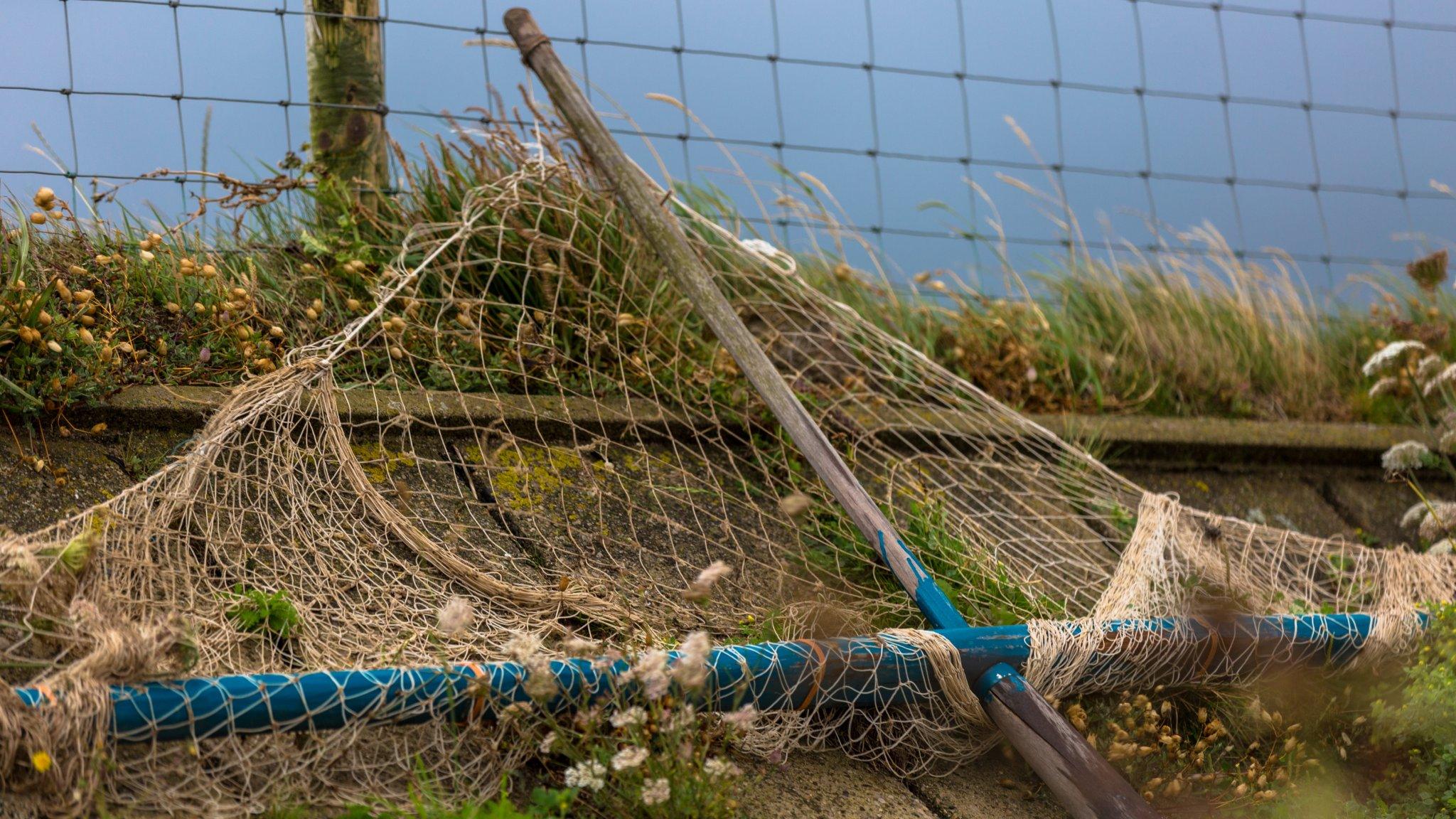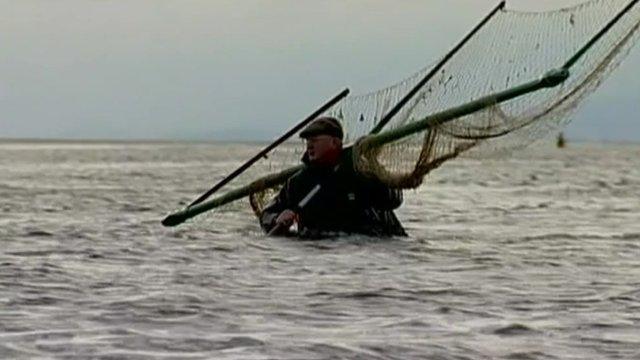Haaf net fear over salmon restriction
- Published

The practice of haaf netting dates back to Viking times
Fears have been voiced for the ancient tradition of haaf netting as new regulations to protect Scottish wild salmon stocks are set to be introduced.
From 1 April, there will be a three-year ban on killing fish outside estuary limits and strict controls on numbers in inland waters.
One MSP described it as an "attack" on fishing in Dumfries and Galloway.
The Scottish government said it had to balance conserving stocks with the interests of salmon fishermen.
Haaf netting is a fishing method which dates back to Viking times and is practised on the Solway Firth in south west Scotland and north west England.
Tom Florey, who manages the Caerlaverock Estate, said the ban would affect the tradition on the River Nith.
"Haaf netting goes back to the days when employees were promised they wouldn't be fed salmon more than three times a week because the numbers were so high," he said.
"But we have all seen the dwindling numbers and the haaf netters themselves have been very good at agreeing restrictions on the hours and the times they practise this very old, ancient art.

Haaf netting is popular in waters of the Solway estuary
"I can see this being a further restriction and possibly for quite a lot of haaf netters a restriction too far and they will not be taking their permit out next year, even though they can still fish for sea trout, the other migratory fish that comes into the Nith system."
He said numbers of haaf netters on the Caerlaverock Estate had fallen from 60 to under 20 in recent years.
"There are dwindling numbers partly because of the restrictions that have been put in over the years," he said.
"I can see that number going down into single figures but we won't let it die out.
"We will by one way or another keep practising, even if it is using estate staff and allowing visitors and tourists to have a go at haaf netting."
Dumfriesshire MSP Elaine Murray described the move as "an attack on the region's fishing industry".
She claimed there was no "genuine research" behind the regulations but the ban was being forced through anyway.
She said the response of local angling and fishing clubs had been "brushed aside".
Her counterpart in Galloway and West Dumfries, Alex Fergusson, said he believed the ban could have been delayed.
"I think there is going to be a huge impact on the local economy," he said.
'Important asset'
He said a delay for a year would have helped local fishing interests to prepare for the move.
Announcing the restrictions, Environment Minister Aileen McLeod said: "Our salmon is a valuable and important asset which we must protect and balance conserving stocks with the interests of those who fish for salmon.
"It is absolutely right that we take action now to protect our salmon stocks for the future.
"The changes have been subject to extensive consultation and we have listened and made some changes to the district classifications as a result of all the feedback we have received."
She said she was confident they now had the "right package of measures" to ensure wild salmon had a "sustainable future" in Scottish waters.
- Published8 April 2015
